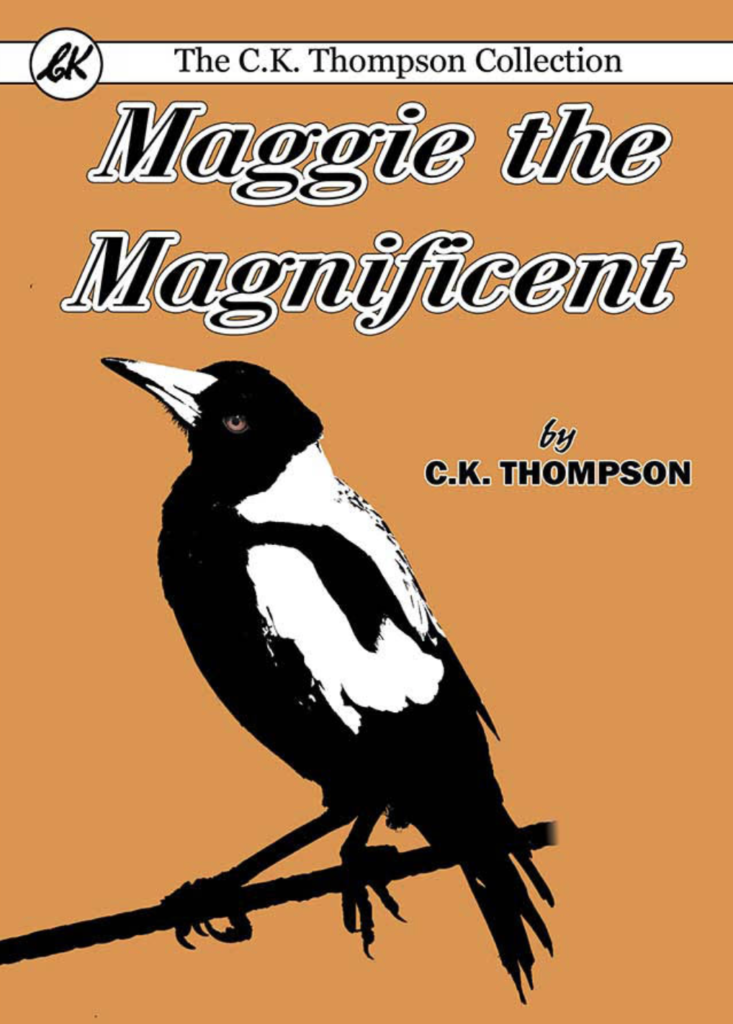A Plumfield Kids Book Review by Greta, age 14
“It was one of those delightful mornings of late winter after the Frost King had made his last defiant gesture. True, the early morning air still had the power to chill, but the grey turned primrose and the primrose to red, heralding glorious bars of light that sprang up across the eastern sky, so did the wintry air become warmer.”

In L. M. Montgomery’s Anne Books, Anne Shirly is encouraged to write about what she knows. This is advice that many authors have taken to heart. C. K. Thompson is no exception. Native to Australia, Thompson tells the stories of Australian wildlife, from Willy Wagtails to Kangaroos.
Maggie the Magnificent is the story of an Australian magpie. I would not have been surprised if Maggie flew off the page and began to sing. This book chronicles the life of Maggie–a typical magpie–from a fledgling to an adult bird. Maggie does not tell us about himself–he acts, thinks, and communicates like a bird. Magnificently life-like human characters give us an account of what magpies are and do. And when they can’t, Thompson fills the gap. The people in this story tell us other facts that many of us probably don’t know.
“It isn’t certain when the first lot arrived from Europe, but there are records of a shipment in 1863 when the ship Princess Royal landed a cargo of starlings and sparrows in Melbourne. They were actually sold in the markets at high prices.”
However, I do have one caution. In this book, there are a total of six badly-behaved boys. Early on in the story, three boys find themselves near Maggie’s parents’ nest. One of them can’t resist climbing the tree and raiding the nest, with the encouragement of his companion. From the nest he takes Maggie. Maggie is still a young fledgling at the time. He tries to raise the magpie, unsuccessfully.
Later in the book, there is another group of three boys who try to destroy Maggie’s nest. In the process, they kill the youngest members of this magpie family. The boys have a fight in which the ring leader falls and is knocked out, and gets a minor cut. His father finds him later and, of course, the boy does not tell his father what really happened but lets him believe that a magpie injured him. Thompson uses this story to tell us important things about magpies. And in both cases, the boys are not presented as being in the right.
This book was out of print until 2017 when Living Book Press brought it back. They have also published many others in this series, including Warrigal the Warrior, Thunderbolt the Falcon, Monarch of the Western Skies, and Willy Wagtail.
As I said in my review of Archimedes and the Door of Science, I do not care for math and science, but I found this book fascinating and engaging. I felt I really knew Maggie and other birds of his kind. I find myself saying, “Did you know (________) about Australian Magpies?” quite often.